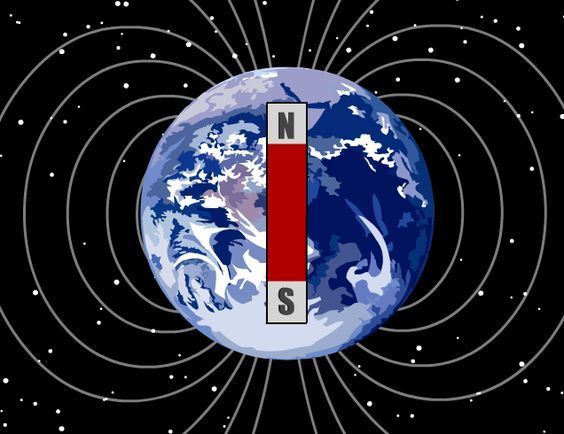Using air for levitation
Knowing the available pieces to use levitation for transportation

With a concept of available pieces to use levitation for transportation, next is the methodology for buildout.
Earth’s electrostatic field is a very powerful force with a useable charge. It’s explained well in the Feynman Lectures on Physics, Electricity in the Atmosphere. In the article Build With Levitation is this: The cell phone uses a battery to power its transceiver to send and receive signals. Viktor Grebennikov’s levitating device utilized compressed CSEs to enact a negative force to interact with Earth’s electrostatic field. It manipulates the field via pivoting fans attached to an axis of the “blinds”.
In the transportation industry, there is a difference between traditional thought with the perspective of aeronautic engineering, and a perspective with the physics of quantum mechanics. The pursuit of aeronautics is to measure the influence of air flow as a vehicle is propelled through the air.
In researching Victor Grebennikov’s work relating to the Cavity Structures Effect (CSE), here is an excerpt from the abstract of a government study relating to the effects of cavity resonance. This is an example of traditional procedure in pursuit of aeronautic engineering; Complex Geometry Effects on Cavity Resonance:
The flow over an aircraft bay is often represented using a rectangular cavity; however, this simplification neglects many features of actual flight geometry that could affect the unsteady pressure field and resulting loading in the bay. To address this shortcoming, a complex cavity geometry was developed to incorporate more realistic aircraft-bay features including shaped inlets, internal cavity structure, and doors. A parametric study of these features was conducted based on fluctuating pressure measurements at subsonic and supersonic Mach numbers. Resonance frequencies and amplitudes increased in the complex geometry compared to a simple rectangular cavity that could produce severe loading conditions for store carriage. High-frequency content and dominant frequencies were generated by features that constricted the flow such as leading-edge overhangs, internal cavity variations, and the presence of closed doors.
Pointing out this differentiation is to emphasize the importance in perspective. Traditional procedure for flight is propulsion. Following this perspective eliminates efforts to discover attraction as a method for flight.
Relating to transportation of flight, the perspective with quantum mechanics is to discover subatomic influences of electrostatic action to varying elements and molecular reactions. The CATTCC pursuit is utilizing the presents of Earth’s electrostatic field and the CSE within a levitating device.
In a previous article, Earth’s electrostatic charge, Earth’s electrostatic field is identified as a potential source for magnetic action. Magnets repel and attract. Earth’s core is magnetic. This magnetic action has the ability to repel and attract. Grebennikov’s levitating device utilizes the CSE as a negative charge. Against Earth’s positive electrostatic charge, Grebennikov’s levitating device has attraction potential.
How to rebuild Grebennikov’s levitating platform
This is the challenge. The layout is clear, who can build a prototype? The first component is to build large segments of CSEs. In the article, Developing the theory for levitation, this picture of Grebennikov’s levitating device is shown.

The pivoting axis isn’t clearly definitive. Nor is the device’s operational diagram detailed. This photograph, however, is a very clear layout of the supposed operational functioning CSE configuration. The question remains, can this, or how does this interact with Earth’s magnetic and atmospheric electrostatic field? The answer seems to be clear: its negative charge.
CATTCC’s research in quantum mechanics shows that levitation is accumulation of vibrational mass. It’s theorized that there is a vibrational interaction from Grebennikov’s cavity structure to Earth’s magnetic and atmospheric field which produces levitation.
How does the device work? There is light shining through the fans, in the picture. Are the fans, which serve as blinds: open or closed? Does this pictured device utilize compressed cavity structures?
Grebennikov spoke of chitin as a component
In the article: From the Notebook of a Naturalist, with excepts of the blogpost: Chitin and Grits is this, from Viktor Grebennikov:
How and why did I make this discovery? I was examining the chitin shells of insects under my microscope in the summer of 1988 along with their pinnate antennae, the fish-scale microstructure of butterfly wings, iridescent colors, and other inventions of nature. I became interested in an amazingly rhythmical microstructure of one large insect detail. It was an extremely well-ordered composition, as though stamped out by factory equipment according to special blueprints and calculations. As I saw it, the intricate sponginess was clearly unnecessary either for the strength of the part, or for its decoration. I have never observed anything like this unusual micro-ornament either in nature, in technology, or in art. Because its structure is three-dimensional, I have been unable to capture it in a drawing so far, or a photograph. Why does an insect need it? Besides, other than in flight, this structure at the bottom of the wing case is always hidden from the eye. No one would ever see it properly. Was it perhaps the wave emitter using "my" multiple cavity structures effect? That truly lucky summer, there were very many insects of this species and I would capture them at night. I was not able to observe these insects neither before, nor later.
I placed the small, concave chitin plate on the microscope stage in order to again examine its strangely star-shaped cells under strong magnification. I again admired this masterpiece jewel work of nature. I was about to place a second identical plate with the same unusual cell structure on its underside almost purposelessly on top of the first one. But then!
The little plate came loose from my tweezers, hung suspended above the other plate on the microscope stage for a few seconds, then turned a few degrees clockwise and slid to the right, then turned counterclockwise and swung and only then it abruptly fell on the desk.
You can imagine what I felt at that moment. When I came to my senses, I tied a few panels together with a wire and it wasn't an easy thing to do. I succeeded only when I positioned them vertically. What I got was a multi-layered chitin block and I placed it on the desk. Even a relatively large object, such as a thumbtack, would not fall on it. Something pushed it up and aside. When I attached the tack on top of the "block", I witnessed incredible, impossible things. The tack would disappear from sight for a few moments. That was when I have realized that this was no "beacon," but something entirely different.
This poses a challenge: how to catch a particular bug and extract its parts.
From the pictures in More About CSEs and Levitation Finding the Solutions for a+b, Grebennikov’s levitating device shows a slight wall surrounding the receded area holding the fan components. The fan structure is metal. Where and how are the cavity structures assembled, Grebennnikov spoke so much about? He mentioned bug chitin panels attached with wire. Within the high tech world of manufacturing, there should be able to be a way to duplicate this. The complexity of data wafers might be able to comply with manufacturing crystalline cavity structures.
As Viktor Schauberger says: ‘Understand and copy nature’. Nature’s phenomena with its presence in certain bugs isn’t found in the intellect of mankind’s use of centrifugal force in aeronautics as a methodology for travel. To attain efficient transportation methodologies, discoveries pertinent to nature must be used.
Levitation is a mystery. The common practice of mankind for levitation is trickery and deception. The practice of lying is merely falsifying science. Those who seek answers from Schauberger’s perspective search for physical mechanisms to activate nature’s techniques.
From pdfcoffee.com in the blogpost, Levitation, solve for a+b:
Two bolt heads can also be seen on the photographs, approximately in the center of each platform halves. This is a bonding of the distribution mechanism, which transfers effort from the “distributors” to a fan opening device. Each fan consists of nine plates. In order to make them strong, the plates are made of sheet metal. Micro-nets are stuck from the upper surface of each plate.On the one hand, the metal does not prevent nets from operating because the effect of cavitary structures cannot be screened and, on the other hand, protects them from mechanical influences such as influence of grass during landing. Holes in the plates, which can be seen, are not related to micro-cells. They are made only for lightening the metal plates’ weight. Do you see that it is difficult for Grebennikov to hold even a lightened version of his platform?
Antigravity effect (created due to the effect of cavitary structures) is produced by the cells but they need “fuel” in order to work with maximal efficiency.
Roughly speaking, the effect of cavitary structures works the following way: any material consists of particles vibrating by its own frequency (read Tesla’s cosmology, works of John Keely, Thomas Henry Morey, Wilhelm Reich and others). Due to such internal atomic vibrations, a stationary wave exists in the environment, around any object (and further, discrete “reflections” or maximums of such a wave).
Since these things have been pointed out before in these blogposts, the point of bringing them up again is the perspective of the fan plates: Micro-nets are stuck from the upper surface of each plate.
It’s how to attach the CSEs of the chitin nets. How did Viktor Grebennikov wire the three dimensional bug parts together, and the other question, can these be remanufactured by 3-D printers?



